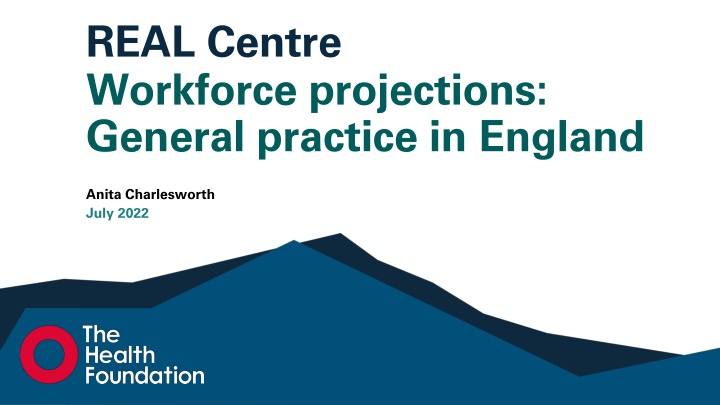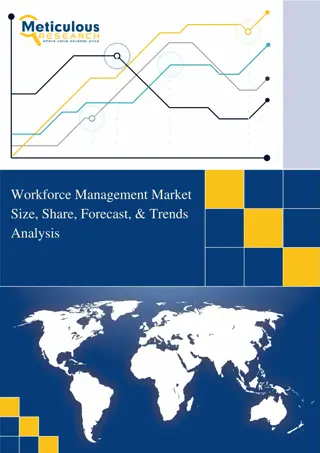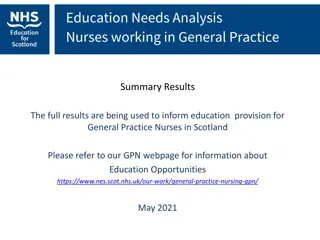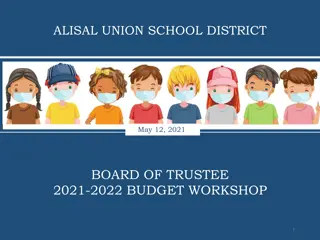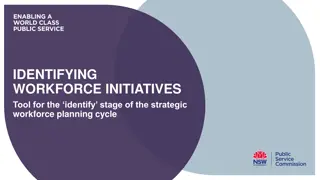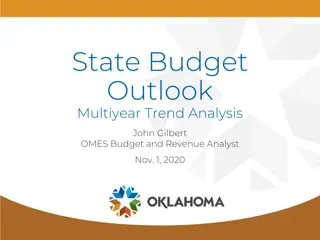Challenges and Projections in the General Practice Workforce in England
The general practice workforce in England has experienced changes in employment numbers over recent years, with a decrease in the number of fully qualified GPs per 100,000 patients. Despite this, there has been a rapid increase in other direct patient care staff due to initiatives like primary care networks and the Additional Roles Reimbursement Scheme. Understanding the workforce demand and supply gap is crucial for addressing the challenges in recruitment and retention of healthcare professionals in general practice. Three scenarios - current policy, optimistic, and pessimistic - shed light on future projections, with an expected 21% increase in full-time equivalent GPs and general practice nurses by 2030/31 under current policy.
Download Presentation

Please find below an Image/Link to download the presentation.
The content on the website is provided AS IS for your information and personal use only. It may not be sold, licensed, or shared on other websites without obtaining consent from the author.If you encounter any issues during the download, it is possible that the publisher has removed the file from their server.
You are allowed to download the files provided on this website for personal or commercial use, subject to the condition that they are used lawfully. All files are the property of their respective owners.
The content on the website is provided AS IS for your information and personal use only. It may not be sold, licensed, or shared on other websites without obtaining consent from the author.
E N D
Presentation Transcript
REAL Centre Workforce projections: General practice in England Anita Charlesworth July 2022
The general practice workforce The number of fully qualified, permanently employed GPs per 100,000 patients in England fell from 47 to 44 between December 2017 and December 2021. However, with the introduction of primary care networks and the Additional Roles Reimbursement Scheme in 2019, other direct patient care staff numbers in general practice have increased rapidly. Workforce projections: General practice in England 20 July 2022 2
Comparing workforce demand and supply allows us to understand the workforce gap and consider policies that could help address this Demand Demand Supply = Workforce gap Workforce gap Supply = Workforce demand Workforce demand (in order to maintain 2018/19 (in order to maintain 2018/19 standards of care using standards of care using existing models) existing models) A function of projected changes in health care activity, driven by: Underlying demand pressures (demographics and morbidity trends) Additional demand pressures (eg NHS Long Term Plan commitments) Workforce supply Workforce supply What policies could help address this gap? A function of recruitment and retention: GPs GPs Nurses in general practice Nurses in general practice Other direct patient care staff Other direct patient care staff 3 scenarios 3 scenarios Workforce projections: General practice in England 20 July 2022 3
3 Scenarios: current policy, optimistic and pessimistic Joiners, leavers (retirement and before), international recruitment, expanded multidisciplinary teams GPs Leavers (retirement and before) main focus for GPNs, joiners, international recruitment (mainly acute sector and less relevant for GPNs) Nurses Note: These assumptions were informed by and validated through stakeholder engagement Workforce projections: General practice in England 20 July 2022 4
Under current policy, the demand for FTE GPs and general practice nurses is projected to increase by around 21% between 2021/22 and 2030/31 Year Source: REAL Centre analysis based on NHS Digital and HEE data Workforce projections: General practice in England 20 July 2022 5
In the short term, the existing GP supply-demand gap is projected to worsen over time FTE FTE Current policy Current policy Optimistic scenario Optimistic scenario Pessimistic scenario Pessimistic scenario Demand Demand Supply Supply Demand Demand Supply Supply Demand Demand Supply Supply 2021/22 2021/22 31,300 27,000 31,300 27,000 31,300 27,000 Shortfall Shortfall - -4,200 4,200 - -4,200 4,200 - -4,200 4,200 2023/24 2023/24 33,700 27,000 35,200 27,500 35,400 26,200 Shortfall Shortfall - -6,700 6,700 - -7,700 7,700 - -9,100 9,100 Demand and supply estimates and projections for qualified permanent GPs in England, 2021/22 2023/24 (numbers are rounded) Workforce projections: General practice in England 20 July 2022 6
In the longer term, mitigating the GP supply-demand gap will require a sustained focus on improved GP retention and effective integration of newer staff roles in general practice Potential FTE GP supply and demand shortfall in the NHS in England, 2020/2021 2030/2031* Workforce projections: General practice in England 20 July 2022 7
In all scenarios, we project a shortage of general practice nurses to 2030/31 Demand and supply projections for FTE nurses in general practice in England, 2021-2022 2030-2031 Workforce projections: General practice in England 20 July 2022 8
Other direct patient care staff numbers have increased rapidly in general practice in the last two years, but the outlook beyond 2023/24 is uncertain FTE direct patient care staff supply excluding GPs and nurses, general practice in England, 2018/2019 2030/2031 Workforce projections: General practice in England 20 July 2022 9
What are the wider implications of our findings? In all scenarios, the supply of GPs and general practice nurses is projected to fall short of demand through this decade. Under current policy, the NHS faces a shortfall of around 8,800 FTE GPs in 2030/31 (close to 1 in 4 projected GP posts) in the pessimistic scenario this rises to around 18,900 FTE GPs (nearly 1 in 2 projected GP posts). This raises serious concerns around future primary care provision in terms of patient safety, the quality of care and equity of access. Sustained policy action targeting improved GP retention will be key to mitigating the GP shortfall. Equally, effective integration of other patient care roles in multidisciplinary teams will also be vital our optimistic scenario projects a lower GP shortfall of around 1,200 FTE (around 3% of projected GP posts), assuming that successful integration of newer DPC roles helps lower GP demand by 9% by 2030/31. Policy choices around staff recruitment, retention, training, funding and equity in general practice have a vital role to play in addressing workforce pressures in general practice in the medium term. Workforce projections: General practice in England 20 July 2022 10
